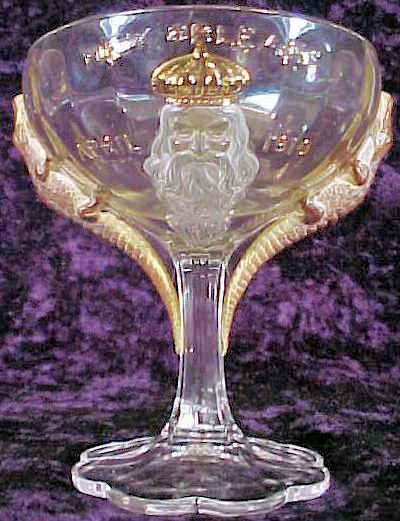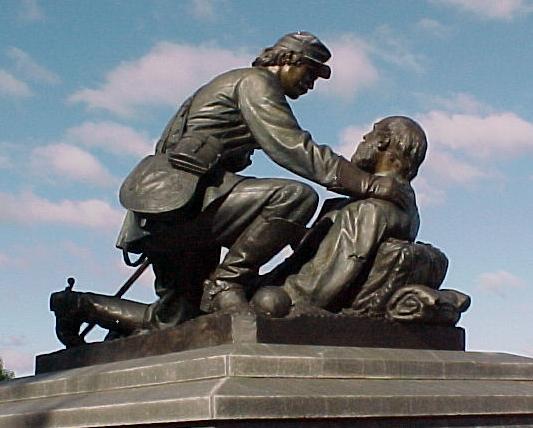Brother David Lettelier and
Why He Collected Masonic Objects from the Past
In what he describes as today’s “throwaway society,” this Masonic museum curator discusses the art of saving (and savoring) objects from the past.
The Phoenixmasonry Masonic Museum and Library, a veritable archive of past Masonic design and symbolism, is a stalwart presence among America’s network of independent Masonic museums. Today, at www.phoenixmasonry.org visitors can find over 3,500 objects on view at the click of the mouse. David established this museum to bring to the Brethren and the visiting public the rich heritage of Masonic Artifacts and Collectibles that were created and produced to commemorate many special Masonic events. Lodge Dedications - Cornerstone Layings, Anniversaries, Officer Installations, State and National Conventions which were all marked and remembered by presentation pieces made in glass, china, porcelain, wood, metals, coins and medallions. Those treasured memories were often given away or sold as fundraisers to those friends, family members and brethren who were involved in their inspiration and creation. These artifacts were truly symbolic of the perfection our Masonic forefathers strived to achieve in their daily lives.
The Mason’s Curator
Founder David Lettelier, sometimes referred to as a “Masonic archaeologist,” was stunned by a revelation that would lead him to set up the museum in 1998. That same year he acquired the first item in his collection: a 1910 Syria Temple Shrine Champaign glass with a hand painted likeness of King Mardi Gras and alligators climbing up the sides of the bowl.
“To me,” says David, “the most exciting things are those that have been mass-produced by the hundreds or thousands. Most people think ‘why keep it? It’s so mundane.’” But David’s museum, loved by nostalgists, designers and Freemasons alike, demonstrates that Masonic branding and packaging, in its rich, colorful, eye-catching diversity, is constantly evolving and is anything but mundane.
David’s attraction to branding began with the graphics on Masonic FDC’s. “They’re wonderful things. I learned a lot about design [from First Day Covers], because FDC’s are brilliant pieces of miniature art.” But eventually, it became a question of competitive edge. “In the philatelic world, I knew there were thousands upon thousands of people who would have better collections than I could ever achieve, and so what would be the point in doing that? I wanted to do the opposite. I wanted to create a subject that most people weren’t researching, but that everybody would be interested in.”
Family Affair
When asked about how he began collecting himself, David recalls his early childhood. “I grew up in a family where my grandfather collected Masonic books about the American Civil War, so it was in the atmosphere. His Grandfather Earl E. Lettelier, Sr. and a member of Doric Lodge No. 140 in Ft. Lauderdale travelled to Masonic Lodges all over the country telling stories and giving lectures on the ‘Brotherhood and Camaraderie’ shared amongst soldiers who were Freemasons from both the North and South.”
As he grew up, he and his grandfather had endless conversations about how and why to collect, how to research an item, and how to make sense of the story that each object told. He was surprised to find that other children didn’t have little collections or museums in their bedrooms composed of comic books, baseball cards, marbles, etc., David said. “All of these little collections of my own kept me grounded in reality and gave flight to my imagination.”
Transcending Generations
When describing the visitor experience at the Phoenixmasonry Masonic Museum, David speaks of the astonishment and nostalgia that many people feel at the longevity of brands like the Square and Compasses, the pillars of Boaz and Jachin and King Solomon’s Temple which can all date back thousands of years. “It’s particularly touching when it crosses generations. If three generations of the same family come into the museum, a granny might start by holding court about her memories of the 50s. And then when it gets to the children’s turn, they’re looking at things that their parents and grandparents don’t understand. It opens up opportunities to hear personal stories of the past, and gives a more rounded understanding of a person beyond births, marriages, and deaths. I find that much more exciting than watching somebody go around the National Gallery. A Picasso painting may be amazing, but it doesn’t have the same personal resonance.”
Parting Thoughts
There are pleasures in the act of accumulation: the thrill of the hunt, the joy of the find. But true collecting is more. It's listening for the hum of history in things, finding connections among art and objects of different times and cultures, and gathering images so that, as in poetry, they reveal new meaning. To conclude, he quotes the poet John Betjeman, “‘Once you understand the past, the confusion of the present becomes clearer,’ and he’s right,” says David. “The more you can see how stories have come about, the more meaningful life is today, and that’s what’s special about The Phoenixmasonry Masonic Museum and Library.”



